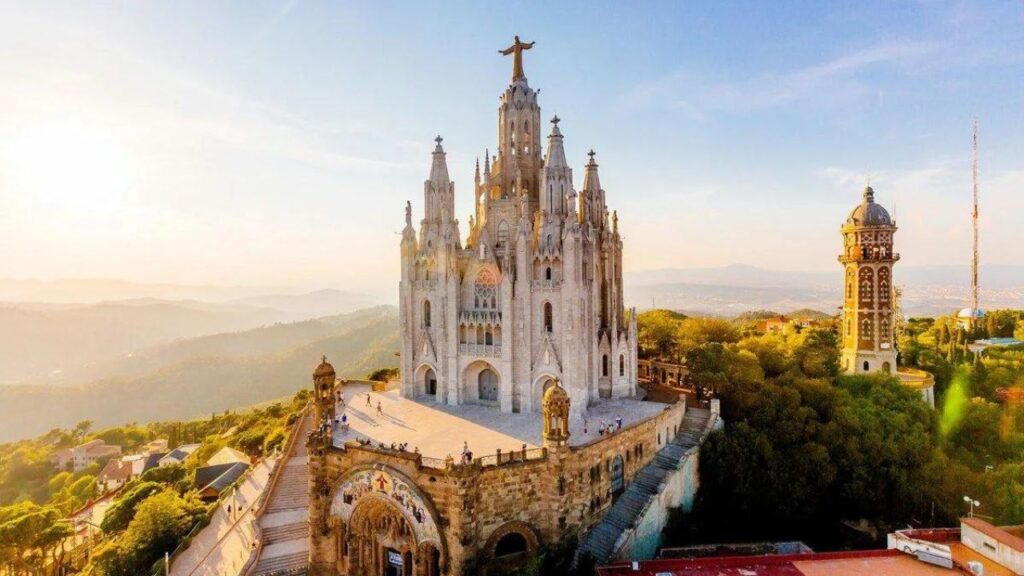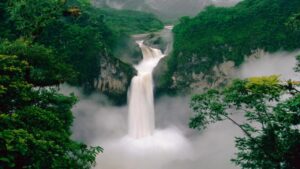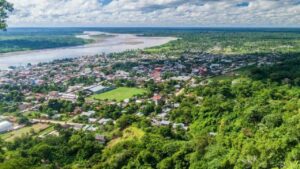Embarking on a journey through Bolivia unveils a tapestry of natural wonders, rich cultural heritage, and breathtaking landscapes. From the high-altitude city of La Paz to the vibrant biodiversity of the Amazon rainforest, Bolivia offers an adventure like no other.
Join us as we explore the 11 best places to visit in Bolivia, each offering a unique and unforgettable experience. From the salt flats of Salar de Uyuni to the ancient ruins of Tiwanaku, Bolivia beckons travelers to discover the magic of this diverse and enchanting country.
1. La Paz: The World’s Highest Administrative Capital
La Paz, nestled in the breathtaking Andes Mountains, stands as the world’s highest administrative capital, captivating visitors with its dizzying altitude and vibrant culture. In just 200 words, best cities to visit in bolivia, let’s delve into the wonders of La Paz.
La Paz is a city of contrasts, where modernity meets tradition amidst a backdrop of rugged peaks. Its iconic cable car system, Mi Teleférico, offers stunning panoramic views of the city as it transports passengers between neighborhoods. The historic heart of La Paz pulses with life, where colorful markets like the Mercado de las Brujas (Witches’ Market) enchant visitors with their array of traditional remedies, handicrafts, and exotic spices.
The streets of La Paz are steeped in history, with colonial-era architecture blending seamlessly with indigenous culture. Visitors can explore the city’s rich heritage at museums like the Coca Museum, delving into the cultural significance of the coca leaf, or the National Museum of Ethnography and Folklore, which showcases the diverse traditions of Bolivia’s indigenous peoples.
As the sun sets over the Andes, La Paz comes alive with energy, with bustling streets and lively squares offering a glimpse into everyday life in this vibrant city. Whether admiring the city’s architectural marvels, sampling local delicacies at street food stalls, or immersing oneself in the rhythm of traditional music and dance, La Paz never fails to captivate the imagination.
2. Salar de Uyuni: The Largest Salt Flat on Earth
Salar de Uyuni, the largest salt flat on Earth, beckons adventurers with its otherworldly beauty and surreal landscapes. In this section, let’s explore the magic of Salar de Uyuni.
Spanning over 10,000 square kilometers in southwestern Bolivia, Salar de Uyuni is a mesmerizing expanse of pure white salt, stretching as far as the eye can see. During the rainy season, a thin layer of water transforms the flat into a giant mirror, reflecting the endless sky in a breathtaking display of symmetry.
Experiencing Salar de Uyuni is like stepping into a dreamlike realm where the boundaries between earth and sky blur. Visitors can embark on jeep tours across the salt flats, venturing to remote islands such as Isla Incahuasi, where giant cacti stand sentinel over the shimmering landscape.
At sunrise and sunset, the salt flats come alive with color, as the sky erupts in hues of pink, orange, and gold, casting an ethereal glow over the surreal terrain. Photographers flock to capture the magic of this natural wonder, immortalizing its beauty in stunning images that defy belief.
For those seeking a truly unique experience, spending a night in a salt hotel offers the chance to sleep amidst the salt crystals, surrounded by the silence of the desert night. As the stars twinkle overhead and the moon casts its silver light across the salt flats, visitors can’t help but feel a sense of wonder and awe at the sheer magnificence of Salar de Uyuni.
3. Lake Titicaca: South America’s Largest Lake
Lake Titicaca, nestled high in the Andes Mountains, is not only South America’s largest lake but also a cultural and natural treasure trove. Let’s dive into the cultural and natural beauty of Lake Titicaca.
Spanning the border between Bolivia and Peru, Lake Titicaca is renowned for its crystal-clear waters, picturesque islands, and rich cultural heritage. Home to indigenous communities such as the Quechua and Aymara peoples, the lake is steeped in tradition and legend, good places to visit in bolivia, making it a fascinating destination for travelers seeking a glimpse into Andean culture.
The floating islands of the Uros people are one of Lake Titicaca’s most iconic attractions. These man-made islands, constructed from totara reeds, have been inhabited for centuries and offer a unique insight into traditional Andean life. Visitors can explore the islands, learn about the Uros’ ancient customs and traditions, and even spend a night with a local family to experience their way of life firsthand.
Island hopping on Lake Titicaca reveals a wealth of cultural and natural wonders. Isla del Sol, believed to be the birthplace of the Inca civilization, boasts ancient ruins, terraced hillsides, and sweeping views of the surrounding lake and mountains. Isla de la Luna, or Moon Island, is shrouded in myth and legend, with archaeological sites dating back thousands of years.
Beyond its cultural significance, Lake Titicaca is also a haven for biodiversity, supporting a wide variety of plant and animal species. Birdwatchers flock to the lake shores to spot rare and colorful bird species, while nature lovers can hike through pristine landscapes teeming with life.
Whether exploring ancient ruins, meeting indigenous communities, or simply soaking in the serene beauty of its azure waters, Lake Titicaca captivates the imagination and leaves a lasting impression on all who visit.
4. Sucre: The White City
Sucre, often referred to as the White City due to its whitewashed colonial architecture, is a jewel nestled in the heart of Bolivia. Let’s embark on a journey to explore Sucre’s rich colonial heritage.
As Bolivia’s constitutional capital and a UNESCO World Heritage Site, Sucre boasts a wealth of well-preserved colonial buildings, charming plazas, and cobblestone streets that transport visitors back in time. Walking through the historic center of Sucre feels like stepping into a living museum, great places to visit in bolivia, where every corner reveals a piece of the city’s storied past.
One of Sucre’s most iconic landmarks is the Casa de la Libertad, where Bolivia’s declaration of independence was signed in 1825. Today, the building houses a museum that offers insight into the country’s struggle for freedom and independence. Visitors can explore the ornate halls and chambers, marvel at historical artifacts, and gain a deeper understanding of Bolivia’s colonial history.
The Sucre Cathedral, with its stunning white facade and towering bell towers, is another architectural marvel not to be missed. Constructed in the 16th century, the cathedral boasts an impressive collection of religious art and artifacts, including intricately carved wooden altars and gilded statues.
The Recoleta Monastery, founded in 1601, is a peaceful oasis amidst the bustle of the city. Its tranquil cloisters, lush gardens, and panoramic views of Sucre offer a serene retreat for visitors seeking a moment of reflection.
5. Potosí: A City Rich in History
Potosí, a city nestled at the foot of Cerro Rico, is a testament to Bolivia’s rich colonial past and its storied mining legacy. In just 200 words, best places to visit in sucre bolivia, let’s delve into the fascinating history of Potosí and its iconic silver mines.
Potosí rose to prominence in the 16th century when Spanish conquistadors discovered vast silver deposits in the nearby Cerro Rico, or Rich Hill. The city quickly became one of the wealthiest and most populous in the Americas, attracting fortune seekers from far and wide.
The mining industry in Potosí boomed, fueling the Spanish Empire’s economy and shaping the course of world history. Thousands of indigenous laborers toiled in the treacherous mines, enduring harsh conditions and exploitation in search of precious metals.
Today, Potosí’s mining legacy is still visible in its colonial-era buildings, narrow streets, and bustling markets. Visitors can explore the historic Casa Nacional de la Moneda, where silver coins were minted during the colonial era, and gain insight into the city’s economic importance.
Descending into the depths of Cerro Rico on a mine tour offers a firsthand glimpse into the harsh reality of mining life. Visitors can witness the dangerous conditions faced by miners and learn about efforts to preserve the region’s cultural and environmental heritage.
Despite its tumultuous past, Potosí remains a vibrant city, proud of its rich history and cultural heritage. Exploring Potosí’s mining legacy is a journey through time, revealing the resilience and ingenuity of the people who shaped its destiny.
6. Potosí: A City Rich in History
Potosí, a city nestled at the foot of Cerro Rico, is a testament to Bolivia’s rich colonial past and its storied mining legacy. In just 200 words, let’s delve into the fascinating history of Potosí and its iconic silver mines.
Potosí rose to prominence in the 16th century when Spanish conquistadors discovered vast silver deposits in the nearby Cerro Rico, or Rich Hill. The city quickly became one of the wealthiest and most populous in the Americas, attracting fortune seekers from far and wide.
The mining industry in Potosí boomed, fueling the Spanish Empire’s economy and shaping the course of world history. Thousands of indigenous laborers toiled in the treacherous mines, enduring harsh conditions and exploitation in search of precious metals.
Today, Potosí’s mining legacy is still visible in its colonial-era buildings, narrow streets, and bustling markets. Visitors can explore the historic Casa Nacional de la Moneda, where silver coins were minted during the colonial era, and gain insight into the city’s economic importance.
7. Madidi National Park: A Wildlife Sanctuary
Madidi National Park, nestled in the heart of the Bolivian Amazon, is a wildlife sanctuary like no other. Let’s embark on a journey to discover the incredible wildlife encounters awaiting visitors in Madidi National Park.
Spanning over 18,000 square kilometers of pristine rainforest, Madidi is one of the most biodiverse parks in the world, teeming with a stunning array of flora and fauna. From elusive jaguars and playful river otters to vibrant macaws and tiny tree frogs, top places to go in bolivia, the park is home to an astonishing variety of species.
Trekking through the dense jungle trails offers the chance to encounter some of Madidi’s most iconic residents. Keep an eye out for the elusive jaguar, the largest big cat in the Americas, as well as the majestic giant otter, which can often be spotted fishing in the park’s rivers and streams.
Birdwatchers will be delighted by the incredible diversity of avian species found in Madidi. With over 1,000 bird species recorded in the park, including colorful parrots, toucans, and hummingbirds, birdwatching in Madidi is a truly unforgettable experience.
For those with a keen eye for wildlife, nocturnal excursions offer the chance to spot elusive creatures such as night monkeys, ocelots, and nocturnal birds. Guided night walks through the forest reveal a whole new world of wildlife activity, with the sounds of the jungle coming alive under the cover of darkness.
8. Tiwanaku: Ancient Ruins and Archaeological Site
Tiwanaku, an ancient archaeological site located near the shores of Lake Titicaca, holds the key to unraveling the mysteries of an ancient civilization. Let’s embark on a journey to explore the enigmatic ruins of Tiwanaku and uncover the secrets of its past.
Dating back over 1,500 years, Tiwanaku was once the capital of a powerful pre-Columbian empire that dominated the Andean region. Today, good places to go in bolivia, the ruins of Tiwanaku stand as a testament to the ingenuity and sophistication of this ancient civilization.
Exploring the ruins of Tiwanaku offers a glimpse into the grandeur of its past. The monumental stone architecture, intricate carvings, and impressive megalithic structures hint at the city’s former glory and importance as a religious and ceremonial center.
9. Santa Cruz de la Sierra: Bolivia’s Economic Hub
Santa Cruz de la Sierra, often simply referred to as Santa Cruz, stands as Bolivia’s economic hub, pulsating with vibrancy and energy. Let’s delve into the dynamic atmosphere and cultural richness of Santa Cruz de la Sierra.
Situated in the eastern lowlands of Bolivia, Santa Cruz is a bustling metropolis known for its rapid growth, economic prosperity, and cultural diversity. With a thriving economy fueled by agriculture, industry, and commerce, Santa Cruz attracts people from all corners of Bolivia and beyond, seeking opportunities and a better way of life.
The city’s vibrant atmosphere is palpable from the moment you arrive. Bustling markets, modern shopping centers, and lively street vendors line the streets, offering a kaleidoscope of sights, sounds, and smells that reflect the city’s dynamic spirit.
Exploring Santa Cruz reveals a rich tapestry of cultural influences, shaped by indigenous traditions, colonial heritage, and modern globalization. From traditional festivals and folkloric dances to contemporary art galleries and international cuisine, Santa Cruz embraces diversity and celebrates its multicultural identity.
10. Cochabamba: The City of Eternal Spring
Cochabamba, known as the City of Eternal Spring, beckons visitors with its delightful climate and charming ambiance. Let’s explore the joys of enjoying the pleasant climate of Cochabamba.
Nestled in the heart of Bolivia’s Andean valleys, Cochabamba enjoys a mild and temperate climate year-round, earning it the nickname “City of Eternal Spring.” With average temperatures hovering around 70 degrees Fahrenheit (21 degrees Celsius) and relatively low humidity, Cochabamba offers the perfect escape from the extremes of both heat and cold.
One of the best ways to experience the pleasant climate of Cochabamba is by exploring its outdoor attractions. The city’s central plaza, Plaza 14 de Septiembre, is a bustling hub of activity, where locals and visitors alike gather to relax, socialize, and enjoy the sunshine. Surrounded by historic buildings, fountains, and palm trees, the plaza is the perfect spot for a stroll or a picnic with friends and family.
Cochabamba’s surrounding countryside offers even more opportunities to enjoy the outdoors. The nearby Tunari National Park, with its rolling hills, lush forests, and crystal-clear streams, is a paradise for nature lovers and outdoor enthusiasts. Hiking, horseback riding, and birdwatching are just a few of the activities available in this pristine natural sanctuary.
11. Rurrenabaque: Gateway to the Bolivian Amazon
Rurrenabaque, nestled on the banks of the Beni River, serves as the gateway to the awe-inspiring Bolivian Amazon. Let’s embark on an adventure into the jungle and explore the wonders of Rurrenabaque.
As the starting point for many Amazon expeditions, Rurrenabaque offers a wide range of jungle adventures for travelers seeking to immerse themselves in the beauty and biodiversity of the rainforest. From wildlife encounters to cultural experiences, best places to visit in la paz bolivia, there’s something for everyone in Rurrenabaque.
One of the most popular activities in Rurrenabaque is wildlife spotting. Guided jungle treks and boat tours allow visitors to explore the surrounding rainforest in search of iconic Amazonian species such as monkeys, sloths, caimans, and a dazzling array of birdlife. With the help of knowledgeable guides, visitors can learn about the intricate ecosystems of the Amazon and the importance of conservation efforts to protect its biodiversity.
For those seeking a more immersive experience, multi-day jungle expeditions offer the chance to venture deep into the heart of the rainforest and spend nights camping under the stars. Falling asleep to the symphony of nocturnal creatures and waking up to the chorus of tropical birds is an experience like no other.
Conclusion
Bolivia is a country of remarkable diversity, offering travelers a wealth of experiences ranging from the soaring peaks of the Andes to the lush depths of the Amazon rainforest. From the bustling streets of La Paz to the tranquil shores of Lake Titicaca, each destination reveals a unique aspect of Bolivia’s rich cultural heritage and natural beauty.
Whether exploring ancient ruins, embarking on jungle adventures, or immersing oneself in vibrant urban life, Bolivia captivates the imagination and leaves a lasting impression on all who visit. With its warm hospitality, stunning landscapes, and wealth of cultural treasures, Bolivia is truly a destination like no other.




